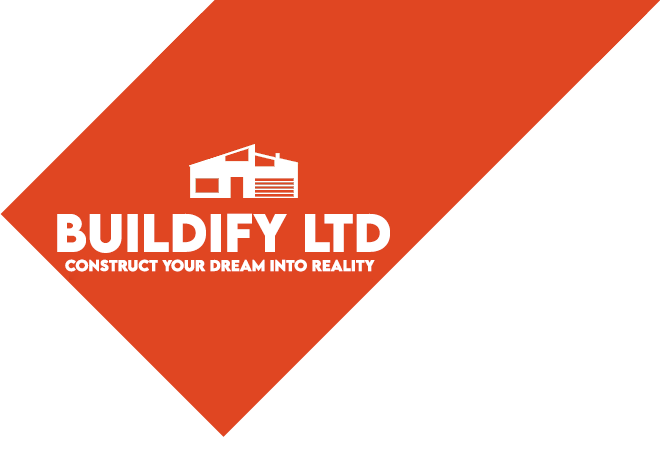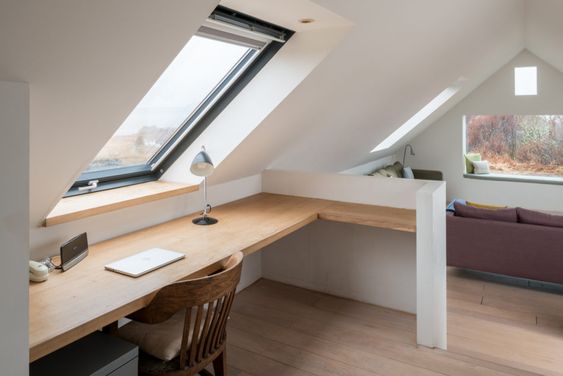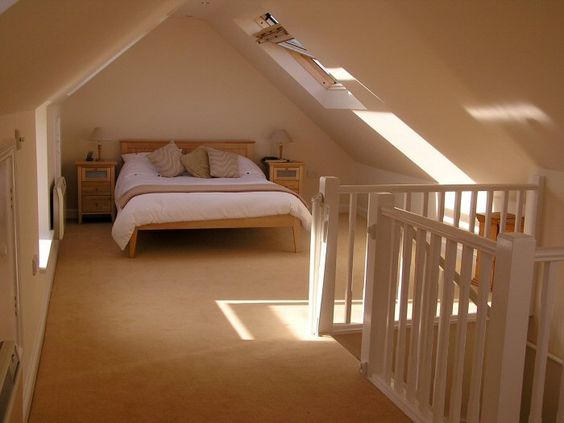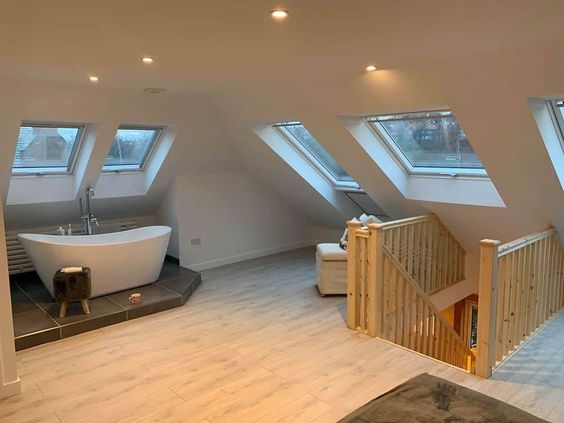Is a loft conversion worth it?
Hello, Londoners! If you’re anything like me, you’ve probably found yourself daydreaming about magically finding more space in your home without the hassle of moving. Enter the loft conversion—a seemingly simple solution that’s been gaining steam across our beloved city. But before you start envisioning your new attic oasis, let’s chat about what it really costs to turn those dreams into reality.
These days, more and more of us are considering expanding upstairs and adding a bedroom or playroom to our homes’ roof areas. A loft conversion can add value to your house while also providing much-needed extra space for a growing family.

How much value does a loft conversion add?
According to recent research conducted by the Nationwide Building Society, converting a loft area can boost the value of your home by up to 20–25%. This rise might be significant in locations where the average house price is high.
A loft conversion is appealing because it uses ‘dead’ space to construct an additional room rather than eating into an outside area as traditional additions do. Because much of the necessary framework is already in place, converting a loft is frequently less expensive per square metre than building a traditional expansion.
Most loft conversions don’t require planning approval if they don’t exceed a particular size limit (40 cubic metres for a terrace, 50 cubic metres for a detached house) or aren’t planned to protrude too far from the existing roof.
In addition to providing additional living space and increasing the value of your property, a loft conversion can also help you save money on energy. All of that added insulation can help you save money on your electricity bills.
What are the different types of loft conversion? 4 loft conversion ideas for different properties in London
- Roof light conversions are the simplest and least destructive, requiring only the addition of skylight windows, flooring, and a stairway to make the space habitable.
- A (usually flat roof) addition protruding from the slope of the roof is erected in a dormer conversion. The most common conversion, ideal for almost any building with a slanting roof.
- Hip-to-gable conversions operate by extending your property’s sloping ‘hip’ roof outwards to create a vertical ‘gable’ wall.
- Mansard conversion is the most expensive, involving an extension that runs the length of a house’s roof and changes its angle to practically vertical.


What should you think about when you decide to start a loft conversion?
Cost of loft conversion and feasibility
| Dormer Loft Conversion | Hip-to-gable Loft Conversion | Mansard Loft Conversion | Velux Loft Conversion |
 |  |  |  |
| Average cost: £31,000 – £60,000 | Average cost: £42,000 – £65,000 | Average cost: £45,000 – £75,000 | Average cost: £21,000 – £63,000 |
| Duration: 4–5 weeks | Duration: 4–6 weeks | Duration: 7–8 weeks | Duration: 4 weeks |
The price of a loft conversion is determined by a number of factors, including the age of your home and the shape and pitch of your current roof. The following aspects have a role in creating a loft space that isn’t overly pricey or complicated:
- Having enough headroom in the loft area (a minimum of 2.2 metres). When you need to expand your roof space, it will have a significant impact on the overall cost and scope of the construction project.
- If the floor joists aren’t robust enough, deeper joists and/or steelwork will be required to sustain the loads.
- Having adequate space on the floor below to allow a fire escape and protection staircase that complies with Building Regulations.
An architect, builder, or specialist loft conversion firm can advise you on prospective ideas, what you’ll need to have in place to meet Building Regulations, and whether or not you’ll need planning permission. Before beginning any work, make sure you check with your local planning authority.
Practical considerations
You should keep in mind that converting your loft will result in you losing a substantial amount of storage space. While it will provide an excellent opportunity for a thorough cleaning, you will need to make room in a garage or shed for all of the stuff you want to save.
You must also be prepared for a lengthy period of disruption. The time it takes to finish loft talks is frequently far longer than a builder will admit. The standard timescale of six to eight weeks does not include all of the finishing touches, such as flooring, decorating, and putting things away.
For several weeks, there will be a lot of dust and mess to cope with. Everyone has varied levels of tolerance, but even the most laid-back of us will want to conduct a daily clean-up while the construction is at its worst.
Unfortunately, existing carpets and furnishings on lower floors may suffer some damage as a result of this approach. Once the builders have ground in a load of dust and plaster, it’s not uncommon to have to re-carpet the entire house. It’s a good idea to leave some money in the budget for post-construction decoration.
Why We’re All Talking About Loft Conversions
There’s no denying it: Loft conversions are a hot topic among homeowners in London. They promise the allure of extra living space without the need to uproot your family or part with your cherished neighbourhood. And let’s not forget the potential to boost your property’s value. Who wouldn’t be tempted?
But here’s the kicker: when it comes to figuring out how much this all costs, things can get a bit… cloudy.
Initial Costs: Just the Tip of the Iceberg
When I first flirted with the idea of converting my attic, the initial quotes felt like a splash of cold water. Prices in London can range wildly depending on the size and type of conversion—think dormer, mansard, or something even more elaborate.
One thing I learned? Always get multiple quotes. It’s not just about comparing prices but understanding what’s included. And trust me, what’s not included can be quite the eye-opener.
The Hidden Costs That Might Just Shock You
Planning Permissions and Regulations
Not every loft conversion needs planning permission, but when you do, the costs and paperwork can mount up. And even if you’re in the clear permission-wise, you’ll still need to comply with building regulations. This isn’t the place to cut corners—getting it right means avoiding costly adjustments later on.
The Surprise Structural Shuffle
Halfway through my own project, we discovered the need for additional structural support. Cue the unexpected costs! It’s a common tale among loft converters, so budget for surprises.
Quality and Specifications
Choosing finishes and fixtures can be like being a kid in a candy store—until you see the price tags. High-end materials can push your budget over the edge, so balance your desires with what’s practical for your wallet.
Professional Fees
Architects, surveyors, project managers—they all play crucial roles in ensuring your loft conversion is up to snuff. Their expertise isn’t cheap, but it’s an investment in doing things right.
Insurance and Safety
Don’t forget to factor in the cost of additional insurance coverage during construction. Safety measures and insurances are non-negotiables that can add to your overall expenditure.
Real-Life Stories from the Loft
I’ve chatted with dozens of fellow Londoners who’ve journeyed through their own conversions. One common thread? Almost everyone ended up spending more than they initially thought. Whether it was upgrading windows for better insulation or splurging on those must-have bespoke bookshelves, the little things added up.
But here’s the twist: despite the budget stretch, not one person regretted their decision. The joy of extra space and the value added to their homes far outweighed the financial sting.
Making the Costs Work for You
Smart Planning and Budgeting
Start with a clear vision and a solid budget. And then, add a contingency fund for those unexpected costs. Trust me, you’ll need it.
The Right Team for the Job
Invest time in finding the right contractor. Look for transparency in pricing and a solid track record of successful projects. Personal recommendations are worth their weight in gold here.
Realistic Expectations
Be realistic about what you can afford in terms of finishes and fixtures. Remember, it’s about enhancing your living space, not winning a design award.
Energy Efficiency Pays Off
Considering energy-efficient options might cost more upfront but can save you a bundle in the long run. Think of it as investing in your home’s future (and the planet’s).
The Bottom Line: Investment vs. Expense
Let’s circle back to the initial shock of those loft conversion costs. Yes, the numbers can be daunting. But when you break it down, a well-executed loft conversion is more than an expense—it’s an investment in your home and your quality of life.
As I sit here in my newly converted loft, I can’t help but feel a sense of satisfaction. Sure, the journey had its share of surprises (and invoices), but the additional space has transformed our home life.
If you choose to upsize
If you determine you can’t handle a significant construction project, you might want to consider upgrading to a larger home. It may also be the greatest option if your property is unsuitable in any manner or if you don’t plan on staying in it for more than a few years. If you won’t be able to benefit from the extension for a long time, it may be difficult to justify the large financial commitment and the inconvenience caused while the work is being done.
Even if you want to stay in the region, taking a step up the property ladder to get the necessary more room might be well worth it. We’d be pleased to give you a no-obligation appraisal of your home and tell you how much property similar to yours has recently sold for.
We can advise that there is currently plenty of movement in the housing market, as many who have been hesitating due to the continuing Brexit negotiations appear to be finally making a move. Our recent blog post on whether now is a good time to move discusses some of the reasons why now might be a great time to upsize.
Of course, there are costs associated with moving (such as solicitor’s fees and stamp duty) that must be considered against the cost of a loft conversion. You may also need to extend your mortgage, so find out if your present one is transferable and what the rates would be if you needed to borrow more money. We’d be pleased to refer you to reputable solicitors and independent financial experts based on our local knowledge.
Moving home, like a loft conversion, can be a lengthy process, but it doesn’t have to be. With the correct help, it doesn’t have to be. If you’d like some free advice on whether a loft conversion is worthwhile, or if you’re wanting to take the next step on the property ladder, contact us now.
Wrapping It Up
Embarking on a loft conversion in London is not for the faint of heart. It requires patience, planning, and a willingness to navigate the rollercoaster of costs. But with the right approach, the result can be incredibly rewarding—a beautiful, functional space that meets your family’s needs and enhances your home’s value.
So, before you dive in, arm yourself with information, set realistic expectations, and prepare for a bit of a financial adventure. And remember, the true value of a loft conversion isn’t just in the added square footage but in the enhanced quality of life it brings to your home.
Happy converting!











